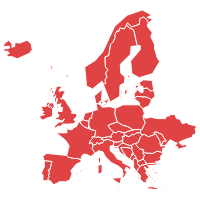- Alcohols
- Enzymes
- Organic Acids
- Others
Fermentation Chemicals Market size was valued at USD 65.08 billion in 2023 and is poised to grow at a CAGR of 6.6% from 2024-2030. Some of the key factors fostering the market growth include increasing manufacturing of antibiotics and steroids, rising demand for nonalcoholic beverages, growing demand from end-user industries, rising environmental concerns, and an increasing number of industrial applications. However, factors such as complicated fermentation processes, side effects of using these chemicals, and high costs are inhibiting market growth. In addition, the improved significance of bio-products is providing huge growth opportunities for the market. The longer a food is held in storage, the lower it becomes in nutrition. Fermented foods are not only ineffective, but they possess harmful properties as well.
The consumption of fermented foods increases the risk of developing gastric cancer. When foods ferment or decompose, certain waste products are produced by the bacteria which break down the food. One of these byproducts is alcohol. Many fermented foods, such as soy sauce, contain a significant amount of alcohol. Of course, the alcohol in fermented foods is usually a small quantity but even small amounts of alcohol affect the cells of the body. Hence, the side effects of fermented chemicals hamper the market growth. This report studies global fermentation chemicals market dynamics elaborately to identify the current trends & drivers, future opportunities, and possible challenges to the key stakeholders operating in the market.
Global Fermentation Chemicals Market Summary
Study Period
2024-2030
Base Year
2023
CAGR
6.6%
Largest Market
Asia Pacific
Fastest Growing Market
North America
Fermentation Chemicals Market Dynamics
Fermentation has had a long history in human food production and consumption. Fermented foods and beverages can comprise anywhere between 5-40% of the human diet in some populations. Not only is this process beneficial for extending shelf-life for foods and beverages, but also fermentation can enhance nutritional properties in a safe and effective manner. In many developed countries, traditional methods are now replaced with specific technologies for production of fermented foods, and an emerging industrial practice allows for higher quality standardization of food products in the market place. Fermented food products that can enhance nutrition, improve health, and prevent disease on a global level will require consistent fermentation methods, evaluation of nutritional compositions, and food safety testing. Due to changes in fermentation processes and the increased consumption of these products, there is an increase in demand for the market.
Key Features of the Reports
- The report provides granular level information about the market size, regional market share, historic market (2019-2023), and forecast (2024-2030)
- The report covers in-detail insights about the competitor’s overview, company share analysis, key market developments, and their key strategies
- The report outlines drivers, restraints, unmet needs, and trends that are currently affecting the market
- The report tracks recent innovations, key developments, and start-up details that are actively working in the market
- The report provides a plethora of information about market entry strategies, regulatory framework, and reimbursement scenario

Global Fermentation Chemicals Market Segmentation
By Product
By Form
- Powder
- Liquid
By Application
- Food & Beverages
- Industrial
- Pharmaceutical & Nutritional
- Plastics & Fibers
- Distillery
- Detergent
- Others
Frequently Asked Questions
The fermentation chemicals market size was valued at USD 65.08 billion in 2023
The report covers the five regions and 15+ countries market data: North America (United States, Canada), Europe (Germany, France, Italy, Spain, and United Kingdom (UK), Asia Pacific (China, India, Japan, Australia & New Zealand), Latin America (Brazil, Mexico, Argentina) and Middle East and Africa (Saudi Arabia, United Arab Emirates, South Africa).
The fermentation chemicals market key players are: AB Enzymes (Germany) Ajinomoto Co., Inc. (Japan) Amano Enzyme Inc. (Japan) Archer Daniels Midland Co. (U.S) BASF SE (Germany) Biocon (India) BioVectra (Canada) Cargill Inc. (U.S) Hansen A/S (Denmark) DowDuPont (U.S) DSM (Netherlands) Evonik Industries AG (Germany) Hanwha Group (South Korea) Lonza (Switzerland)
| 1. Executive Summary |
| 2. Global Sterols Market Introduction |
| Global Sterols Market Taxonomy |
| Global Sterols Market Definitions |
| Raw Material |
| Type |
| Application |
| 3. Global Sterols Market Dynamics |
| Drivers |
| Restraints |
| Opportunities/Unmet Needs of the Market |
| Trends |
| Global Sterols Market Dynamic Factors - Impact Analysis |
| Global Sterols Market Competition Landscape |
| 4. Global Sterols Market Analysis, 2019 - 2023 and Forecast, 2024 - 2030 |
| Market Analysis, 2019 - 2023 and Forecast, 2024 - 2030 (Revenue, USD Mn), Volume (000MT) |
| Year-over-Year (Y-o-Y) Growth Analysis (%) |
| Market Opportunity Analysis |
| 5. Global Sterols Market, By Raw Material, 2019 - 2023 and Forecast, 2024 - 2030 (Revenue, USD Mn), Volume (000MT) |
| Rapeseed Oil |
| Market Analysis, 2019 - 2023 and Forecast, 2024 - 2030 (Revenue, USD Mn), Volume (000MT) |
| Year-over-Year (Y-o-Y) Growth Analysis (%) and Market Share Analysis (%) |
| Market Opportunity Analysis |
| Corn Oil |
| Market Analysis, 2019 - 2023 and Forecast, 2024 - 2030 (Revenue, USD Mn), Volume (000MT) |
| Year-over-Year (Y-o-Y) Growth Analysis (%) and Market Share Analysis (%) |
| Market Opportunity Analysis |
| Soybean Oil |
| Market Analysis, 2019 - 2023 and Forecast, 2024 - 2030 (Revenue, USD Mn), Volume (000MT) |
| Year-over-Year (Y-o-Y) Growth Analysis (%) and Market Share Analysis (%) |
| Market Opportunity Analysis |
| Sunflower Oil |
| Market Analysis, 2019 - 2023 and Forecast, 2024 - 2030 (Revenue, USD Mn), Volume (000MT) |
| Year-over-Year (Y-o-Y) Growth Analysis (%) and Market Share Analysis (%) |
| Market Opportunity Analysis |
| Vegetable Oil |
| Market Analysis, 2019 - 2023 and Forecast, 2024 - 2030 (Revenue, USD Mn), Volume (000MT) |
| Year-over-Year (Y-o-Y) Growth Analysis (%) and Market Share Analysis (%) |
| Market Opportunity Analysis |
| Others |
| Market Analysis, 2019 - 2023 and Forecast, 2024 - 2030 (Revenue, USD Mn), Volume (000MT) |
| Year-over-Year (Y-o-Y) Growth Analysis (%) and Market Share Analysis (%) |
| Market Opportunity Analysis |
| 6. Global Sterols Market, By Type, 2019 - 2023 and Forecast, 2024 - 2030 (Revenue, USD Mn), Volume (000MT) |
| Brassicasterol |
| Market Analysis, 2019 - 2023 and Forecast, 2024 - 2030 (Revenue, USD Mn), Volume (000MT) |
| Year-over-Year (Y-o-Y) Growth Analysis (%) and Market Share Analysis (%) |
| Market Opportunity Analysis |
| Beta-sitosterol |
| Market Analysis, 2019 - 2023 and Forecast, 2024 - 2030 (Revenue, USD Mn), Volume (000MT) |
| Year-over-Year (Y-o-Y) Growth Analysis (%) and Market Share Analysis (%) |
| Market Opportunity Analysis |
| Stigmasterol |
| Market Analysis, 2019 - 2023 and Forecast, 2024 - 2030 (Revenue, USD Mn), Volume (000MT) |
| Year-over-Year (Y-o-Y) Growth Analysis (%) and Market Share Analysis (%) |
| Market Opportunity Analysis |
| Campesterol |
| Market Analysis, 2019 - 2023 and Forecast, 2024 - 2030 (Revenue, USD Mn), Volume (000MT) |
| Year-over-Year (Y-o-Y) Growth Analysis (%) and Market Share Analysis (%) |
| Market Opportunity Analysis |
| Others |
| Market Analysis, 2019 - 2023 and Forecast, 2024 - 2030 (Revenue, USD Mn), Volume (000MT) |
| Year-over-Year (Y-o-Y) Growth Analysis (%) and Market Share Analysis (%) |
| Market Opportunity Analysis |
| 7. Global Sterols Market, By Application, 2019 - 2023 and Forecast, 2024 - 2030 (Revenue, USD Mn), Volume (000MT) |
| Cosmetics |
| Market Analysis, 2019 - 2023 and Forecast, 2024 - 2030 (Revenue, USD Mn), Volume (000MT) |
| Year-over-Year (Y-o-Y) Growth Analysis (%) and Market Share Analysis (%) |
| Market Opportunity Analysis |
| Food |
| Market Analysis, 2019 - 2023 and Forecast, 2024 - 2030 (Revenue, USD Mn), Volume (000MT) |
| Year-over-Year (Y-o-Y) Growth Analysis (%) and Market Share Analysis (%) |
| Market Opportunity Analysis |
| Nutraceuticals |
| Market Analysis, 2019 - 2023 and Forecast, 2024 - 2030 (Revenue, USD Mn), Volume (000MT) |
| Year-over-Year (Y-o-Y) Growth Analysis (%) and Market Share Analysis (%) |
| Market Opportunity Analysis |
| Others |
| Market Analysis, 2019 - 2023 and Forecast, 2024 - 2030 (Revenue, USD Mn), Volume (000MT) |
| Year-over-Year (Y-o-Y) Growth Analysis (%) and Market Share Analysis (%) |
| Market Opportunity Analysis |
| 8. Global Sterols Market Forecast, By Region, 2019 - 2023 and Forecast, 2024 - 2030 (Revenue, USD Mn), Volume (000MT) |
| North America |
| Market Analysis, 2019 - 2023 and Forecast, 2024 - 2030 (Revenue, USD Mn), Volume (000MT) |
| Year-over-Year (Y-o-Y) Growth Analysis (%) and Market Share Analysis (%) |
| Market Opportunity Analysis |
| Europe |
| Market Analysis, 2019 - 2023 and Forecast, 2024 - 2030 (Revenue, USD Mn), Volume (000MT) |
| Year-over-Year (Y-o-Y) Growth Analysis (%) and Market Share Analysis (%) |
| Market Opportunity Analysis |
| Asia-Pacific |
| Market Analysis, 2019 - 2023 and Forecast, 2024 - 2030 (Revenue, USD Mn), Volume (000MT) |
| Year-over-Year (Y-o-Y) Growth Analysis (%) and Market Share Analysis (%) |
| Market Opportunity Analysis |
| Latin America |
| Market Analysis, 2019 - 2023 and Forecast, 2024 - 2030 (Revenue, USD Mn), Volume (000MT) |
| Year-over-Year (Y-o-Y) Growth Analysis (%) and Market Share Analysis (%) |
| Market Opportunity Analysis |
| Middle East and Africa |
| Market Analysis, 2019 - 2023 and Forecast, 2024 - 2030 (Revenue, USD Mn), Volume (000MT) |
| Year-over-Year (Y-o-Y) Growth Analysis (%) and Market Share Analysis (%) |
| Market Opportunity Analysis |
| Global Sterols Market - Opportunity Analysis Index, By Raw Material, Type, Application and Region, 2024 - 2030 |
| 9. North America Sterols Market Analysis, 2019 - 2023 and Forecast, 2024 - 2030 (Revenue, USD Mn), Volume (000MT) |
| Raw Material Analysis 2019 - 2023 and Forecast 2024 - 2030 by Revenue (USD Mn), Y-o-Y Growth (%), and Market Share (%) |
| Rapeseed Oil |
| Corn Oil |
| Soybean Oil |
| Sunflower Oil |
| Vegetable Oil |
| Others |
| Type Analysis 2019 - 2023 and Forecast 2024 - 2030 by Revenue (USD Mn), Y-o-Y Growth (%), and Market Share (%) |
| Brassicasterol |
| Beta-sitosterol |
| Stigmasterol |
| Campesterol |
| Others |
| Application Analysis 2019 - 2023 and Forecast 2024 - 2030 by Revenue (USD Mn), Y-o-Y Growth (%), and Market Share (%) |
| Cosmetics |
| Food |
| Nutraceuticals |
| Others |
| Country Analysis 2019 - 2023 and Forecast 2024 - 2030 by Revenue (USD Mn) Y-o-Y Growth (%) and Market Share (%) |
| US. |
| Canada |
| North America Sterols Market - Opportunity Analysis Index, By Raw Material, Type, Application and Country, 2024 - 2030 |
| North America Sterols Market Dynamics Trends |
| 10. Europe Sterols Market Analysis, 2019 - 2023 and Forecast, 2024 - 2030 (Revenue, USD Mn), Volume (000MT) |
| Raw Material Analysis 2019 - 2023 and Forecast 2024 - 2030 by Revenue (USD Mn), Y-o-Y Growth (%), and Market Share (%) |
| Rapeseed Oil |
| Corn Oil |
| Soybean Oil |
| Sunflower Oil |
| Vegetable Oil |
| Others |
| Type Analysis 2019 - 2023 and Forecast 2024 - 2030 by Revenue (USD Mn), Y-o-Y Growth (%), and Market Share (%) |
| Brassicasterol |
| Beta-sitosterol |
| Stigmasterol |
| Campesterol |
| Others |
| Application Analysis 2019 - 2023 and Forecast 2024 - 2030 by Revenue (USD Mn), Y-o-Y Growth (%), and Market Share (%) |
| Cosmetics |
| Food |
| Nutraceuticals |
| Others |
| Country Analysis 2019 - 2023 and Forecast 2024 - 2030 by Revenue (USD Mn) Y-o-Y Growth (%) and Market Share (%) |
| Germany |
| UK |
| France |
| Spain |
| Italy |
| Russia |
| Poland |
| Rest of Europe |
| Europe Sterols Market - Opportunity Analysis Index, By Raw Material, Type, Application and Country, 2024 - 2030 |
| Europe Sterols Market Dynamics – Trends |
| 11. Asia-Pacific Sterols Market Analysis, 2019 - 2023 and Forecast, 2024 - 2030 (Revenue, USD Mn), Volume (000MT) |
| Raw Material Analysis 2019 - 2023 and Forecast 2024 - 2030 by Revenue (USD Mn), Y-o-Y Growth (%), and Market Share (%) |
| Rapeseed Oil |
| Corn Oil |
| Soybean Oil |
| Sunflower Oil |
| Vegetable Oil |
| Others |
| Type Analysis 2019 - 2023 and Forecast 2024 - 2030 by Revenue (USD Mn), Y-o-Y Growth (%), and Market Share (%) |
| Brassicasterol |
| Beta-sitosterol |
| Stigmasterol |
| Campesterol |
| Others |
| Application Analysis 2019 - 2023 and Forecast 2024 - 2030 by Revenue (USD Mn), Y-o-Y Growth (%), and Market Share (%) |
| Cosmetics |
| Food |
| Nutraceuticals |
| Others |
| Country Analysis 2019 - 2023 and Forecast 2024 - 2030 by Revenue (USD Mn) Y-o-Y Growth (%) and Market Share (%) |
| Japan |
| China |
| India |
| ASEAN |
| Australia & New Zealand |
| Rest of Asia-Pacific |
| Asia-Pacific Sterols Market - Opportunity Analysis Index, By Raw Material, Type, Application and Country, 2024 - 2030 |
| Asia-Pacific Sterols Market Dynamics Trends |
| 12. Latin America Sterols Market Analysis, 2019 - 2023 and Forecast, 2024 - 2030 (Revenue, USD Mn), Volume (000MT) |
| Raw Material Analysis 2019 - 2023 and Forecast 2024 - 2030 by Revenue (USD Mn), Y-o-Y Growth (%), and Market Share (%) |
| Rapeseed Oil |
| Corn Oil |
| Soybean Oil |
| Sunflower Oil |
| Vegetable Oil |
| Others |
| Type Analysis 2019 - 2023 and Forecast 2024 - 2030 by Revenue (USD Mn), Y-o-Y Growth (%), and Market Share (%) |
| Brassicasterol |
| Beta-sitosterol |
| Stigmasterol |
| Campesterol |
| Others |
| Application Analysis 2019 - 2023 and Forecast 2024 - 2030 by Revenue (USD Mn), Y-o-Y Growth (%), and Market Share (%) |
| Cosmetics |
| Food |
| Nutraceuticals |
| Others |
| Country Analysis 2019 - 2023 and Forecast 2024 - 2030 by Revenue (USD Mn) Y-o-Y Growth (%) and Market Share (%) |
| Brazil |
| Mexico |
| Argentina |
| Venezuela |
| Rest of Latin America |
| Latin America Sterols Market - Opportunity Analysis Index, By Raw Material, Type, Application and Country, 2024 - 2030 |
| Latin America Sterols Market Dynamics Trends |
| 13. Middle East and Africa Sterols Market Analysis, 2019 - 2023 and Forecast, 2024 - 2030 (Revenue, USD Mn), Volume (000MT) |
| Raw Material Analysis 2019 - 2023 and Forecast 2024 - 2030 by Revenue (USD Mn), Y-o-Y Growth (%), and Market Share (%) |
| Rapeseed Oil |
| Corn Oil |
| Soybean Oil |
| Sunflower Oil |
| Vegetable Oil |
| Others |
| Type Analysis 2019 - 2023 and Forecast 2024 - 2030 by Revenue (USD Mn), Y-o-Y Growth (%), and Market Share (%) |
| Brassicasterol |
| Beta-sitosterol |
| Stigmasterol |
| Campesterol |
| Others |
| Application Analysis 2019 - 2023 and Forecast 2024 - 2030 by Revenue (USD Mn), Y-o-Y Growth (%), and Market Share (%) |
| Cosmetics |
| Food |
| Nutraceuticals |
| Others |
| Country Analysis 2019 - 2023 and Forecast 2024 - 2030 by Revenue (USD Mn) Y-o-Y Growth (%) and Market Share (%) |
| Gulf Cooperation Council (GCC) Countries |
| Israel |
| South Africa |
| Rest of MEA |
| MEA Sterols Market - Opportunity Analysis Index, By Raw Material, Type, Application and Country, 2024 - 2030 |
| MEA Sterols Market Dynamics Trends |
| 14. Competition Landscape |
| Strategic Dashboard of Top Market Players |
| Company Profiles (Introduction, Financial Analysis, System & Service Offerings, Key Developments, Strategies, and SWOT Analysis) |
| Advanced Organic Materials (Argentina) |
| Arboris LLC (U.S) |
| BASF SE (Germany) |
| Cargill Inc. (U.S) |
| COFCO Tech Bioengineering (Tianjin) Co.Ltd. (China) |
| Lipofoods SLU (Spain) |
| Matrix Fine Sciences Pvt. Ltd. (India) |
| Nutrartis (Chile) |
| Raisio Plc (Finland) |
| The Archer Daniels Midland Company (U.S) |
| Vitae Caps S.A. (Spain) |
| Vita-Solar Biotechnology Co.Ltd. (China) |
| Xian Healthful Biotechnology Co.Ltd (China) |
| 15. Research Methodology |
| 16. Key Assumptions and Acronyms |
- AB Enzymes (Germany)
- Ajinomoto Co., Inc. (Japan)
- Amano Enzyme Inc. (Japan)
- Archer Daniels Midland Co. (U.S)
- BASF SE (Germany)
- Biocon (India)
- BioVectra (Canada)
- Cargill Inc. (U.S)
- Hansen A/S (Denmark)
- DowDuPont (U.S)
- DSM (Netherlands)
- Evonik Industries AG (Germany)
- Hanwha Group (South Korea)
- Lonza (Switzerland)




